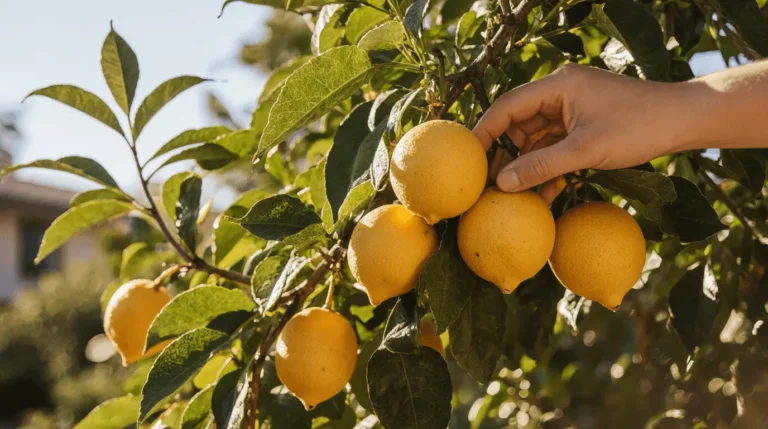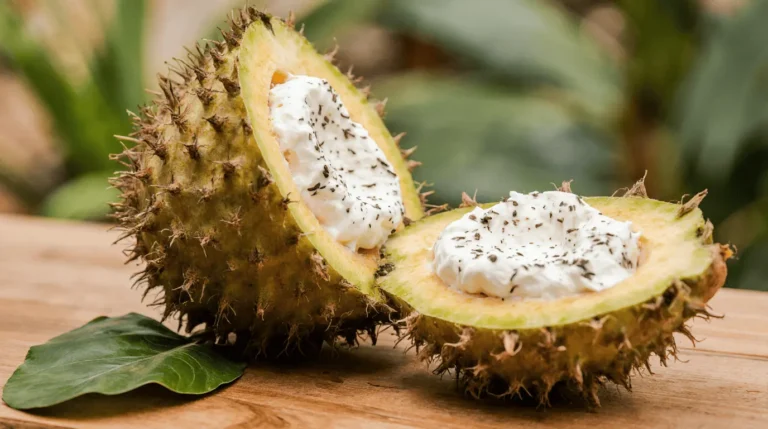If you’re looking for a low-maintenance and hardy herb that brings both beauty and utility to your garden, the ruda plant, also known as rue, is a perfect choice. This time-tested plant has deep roots in tradition, valued for centuries in folk medicine and religious rituals across many cultures. Its distinctive look and pleasant fragrance make it an attractive plant for any balcony or outdoor space, while its symbolic value in spiritual protection adds to its timeless charm. I first grew rue in a small healing plant garden, and its resilience and practical use quickly made it one of my favorites.
Rue’s medicinal uses, traditional uses, and real-world benefits make it more than just a garden herb—it’s a connection to Mediterranean gardens and modern herbalist kits alike. Whether you want to grow it to harvest for natural remedies, use it for deterring insects, or simply as an addition to a pollinator-friendly herb bed, this versatile herb will reward you in many ways. Just remember the basic care tips and safety precautions, and you’ll have a thriving rue plant that continues to inspire future generations with its green legacy.
What Is the Rue Plant (Ruda)?
The Rue, also known as Ruta graveolens, is a hardy, drought-tolerant, perennial herb admired for its strong aroma and striking blue-green foliage. Originating from the Balkan Peninsula, this plant has been cultivated for centuries for both culinary uses and medicinal uses. Its clustered yellow flowers and bluish-green leaves make it a beautiful choice for any herb garden, especially if you prefer low-maintenance, resilient, and versatile plants. I personally love how its standout feature—the bluish-purple leaves—adds a soft, calming tone to the garden.
In ancient Roman times and ancient Rome, rue was known for its insect-repellent properties and its role in traditional medicine. It contains antispasmodic properties, making it useful in relieving discomfort and aiding digestion. However, modern experts caution that toxic leaves may cause skin irritation upon contact or if taken through ingestion. Despite its toxicity, its history in medicinal history remains significant—rue was used to stimulate menstruation and relieve muscle spasms. Its strong aroma was even believed to drive away evil spirits and bad digestion, as described in early herbal records.
Culturally, rue has a deep connection to folklore and cultural rituals. In some Sephardic Jewish communities, it is regarded as a protective herb used during Yom Kippur, while in Mediterranean traditions, it plays a role in crafting herbal amulets for protection and spiritual strength. Its symbolism, blending traditional medicine and spiritual belief, shows how one plant can link generations through its healing and protective nature.
How to Plant Rue in the Garden
Growing rue in a home garden is a simple process that even beginners with minimal horticulture skills can enjoy. I’ve found that choosing the right location and preparing the soil properly makes all the difference. Rue thrives best in sunny spots with well-drained conditions, which help prevent root rot and allow the plant to flourish. Avoid dense shade or areas with heavy moisture, as these can hinder growth. Once planted, the rewards are worth it — you’ll be greeted with vibrant foliage and pollinator-friendly flowers that bring life and charm to any garden.
Tips For Planting Ruda
- The best planting season for Ruda is in spring, when the weather is mild and the soil begins to warm up.
- Maintain an ideal temperature between 60–70°F (15–21°C) to help young plants establish strong roots and healthy growth.
- Choose a soil type that is well-drained, as Ruda dislikes soggy conditions.
- A slightly acidic to alkaline soil balance works best for consistent development.
- Provide plenty of sunlight, ensuring full sun exposure for at least a minimum 6 hours daily to keep the plant vibrant and aromatic.
Steps to Plant Rue
When I grow rue in my garden, I always start by choosing a sunny spot that’s slightly isolated to minimize skin contact while working with the plant. Rue thrives best in dry soil or airy soil that has proper drainage and balanced pH. Avoid wet soil or clay-heavy soil, as these conditions can stunt growth. Mixing sand and lime helps loosen heavy ground and improve air flow.
Here’s how to get the best results when planting:
- If planting multiple, space plants about 1–2 feet apart for better spacing and healthy air circulation.
- Prepare smooth soil and press seeds lightly onto the surface, since rue seeds need sunlight to germinate properly.
- Water gently to settle seeds without over-saturating the soil.
- You can start rue indoors in seed trays, and once seedlings have 2–3 sets of true leaves, they can be transplanted outdoors.
- This transplanting step ensures hardier plants, especially if you’re dealing with heavy soil. In that case, consider using containers instead of direct planting.
Rue Plant Care Tips
Once your established rue begins to thrive, it becomes a mostly hands-off plant that only needs light maintenance to ensure lush growth and long-term success. I’ve noticed that keeping an eye on sunlight exposure and moisture levels helps prevent stress and potential fungal issues. Occasional pruning not only keeps its shape neat but also improves airflow, reducing the chances of disease. Adding mulch around the base of the plant helps retain soil moisture, suppress weeds, and enhance soil health, making the rue stronger and more resilient through the growing season.
How to Care For Rue
- Give your rue plenty of sunlight, around 6–8 hours of direct light daily to help it thrive.
- Keep the soil with good drainage and avoid soggy spots that can cause root rot.
- Watering should be minimal; only add water during long dry spells. If it’s in a container or partial shade, about a half cup every 9 days is enough.
- Use no fertilizer, as rue prefers poor soil — none needed for healthy growth.
- The climate should be warm; rue tolerates heat and drought very well.
- It’s naturally pest-resistant, so pests and disease are rare, especially if you keep the soil dry and airy.
Quick Maintenance Tips
- Deadhead faded blooms regularly to encourage fresh flowering and keep your plant looking vibrant.
- Add mulch around the plant base to suppress weeds and retain moisture.
- Trim unruly stems to maintain shape and prevent legginess.
- Remove dead branches to increase airflow and reduce the risk of diseases.
- Rue fits beautifully in rock gardens, borders, or herb spirals, offering low-maintenance care for busy gardeners.
- Naturally resistant to most pests, it adds beauty to any space without much effort.
I’ve found that following these simple steps keeps rue thriving year-round. Its strong structure and adaptability make it one of the easiest herbs to maintain.
Growing Rue in Pots
Container gardening is perfect for rue if you have limited garden space or want to control soil conditions. Using pots gives you flexibility to move the plant to sunnier spots or offer shelter during storms. Always ensure proper drainage so the plant receives around 6 hours of sun each day. Check for compacted soil or excess moisture regularly to keep the roots healthy and prevent rot. I’ve found that giving rue a breathable container helps it thrive beautifully even in small spaces.
You Can Grow Rue in Containers Easily
- Use an unglazed clay pot that’s at least 16 inches wide to give roots enough space to grow freely.
- Make sure the pot has drainage holes at the bottom to prevent water from collecting.
- Fill it with a well-draining potting mix that supports healthy growth and prevents soggy roots.
- Place the pot in full sun so the plant gets the light it needs throughout the day.
- Prune back the plant to about 6 inches in early spring to encourage fresh growth and keep it compact.
Propagation Methods
- Take 4–6 inch softwood cuttings in late spring when the plant is actively growing.
- Dip the cut ends in rooting hormone and plant them in moist soil for better rooting.
- Use a plastic cover to trap humidity and help roots form faster.
- Once roots are established, transplant them into pots or garden beds.
- Rue also propagates from seeds that germinate within 1–4 weeks when kept at about 70°F (21°C).
I’ve noticed that maintaining steady warmth and humidity makes propagation more successful and results in stronger plants.
How to Harvest and Use Rue
When harvesting rue, always handle it with care because its natural oils can cause skin irritation, especially on sunny days that may trigger photodermatitis. I always wear gloves and long sleeves for protection. Harvest in the morning when the oil content is highest to ensure better preservation. Once collected, the leaves can be dried and stored for future use in herbal remedies, sachets, or pest-repellent mixes. Thanks to its pungent aroma, rue also works wonderfully in natural cleaning and insect-control products, making it both practical and versatile in everyday life.
Uses
- Harvest rue in the mid morning or late morning, once the dew has evaporated but the essential oils remain strong. Look for healthy stems, non-yellowing stems, and fully formed flowers to ensure quality.
- Always wear gloves and long sleeves, as rue sap can cause skin irritation or even photodermatitis in sunlight. Use clean scissors or sharp pruning shears to cut stems about 4–6 inches from the base for safe and efficient harvesting.
- For drying and storing, tie bundles of harvested rue and hang upside down in a dry area that’s shaded and ventilated. After about 1–2 weeks, the brittle leaves can be gently removed and placed in airtight glass jars.
- You can use dried rue in sachets or cloth pouches to keep in drawers and repel insects. It’s also perfect for ritual bundles, herbal baths, or other natural remedies, but always follow proper guidance when using it medicinally or spiritually.
Read Also: Tropical Fruit Trees: Grow Exotic Paradise at Home (Grow Guide)
Types of Rue You Can Grow
There are many varieties of rue that offer both aesthetic benefits and functional benefits for your garden. These cultivars differ in leaf color, aroma, and hardiness, allowing you to pick a rue variety that complements your garden design or matches your herbal needs. Whether you grow them for ornamental purposes, harvesting leaves, or for traditional remedies, each type brings unique charm and versatility. I’ve grown several types over the years, and each one adds something special to both outdoor beds and containers.
- Black Beauty – Known for its blue-green leaves and rich texture.
- Jackman’s Blue – Features bright blue leaves with a fragrant aroma.
- Variegata – Displays variegated leaves with elegant cream-white patterns.
- Use foliar sprays like dry yeast and Ascobin to boost plant growth, leaf number, and branching.
Each of these varieties adapts beautifully to different growing conditions and looks stunning whether grown indoors or outdoors. They balance beauty with resilience, meeting all kinds of gardening goals with ease.
Cold Weather Protection & Overwatering Warning
Even though rue is quite resilient, it needs extra care in colder climates when temperatures drop near freezing. Cold damage can affect growth and even harm young transplants. During your winter care routine, focus on relocating potted rue indoors or using insulation, mulch, and frost covers to keep it protected. Keeping an eye on moisture levels in cold soil is equally important, as too much water can lead to root rot and plant decline.
- Apply mulch around the base to protect roots.
- Move garden plants to a sheltered area or use a frost cloth during sudden cold snaps.
- Avoid overwatering — it’s a common mistake in rue care.
- Water only when the top 1–2 inches of soil feel dry to the touch.
I’ve learned that keeping the balance between warmth and moisture during winter keeps rue thriving and strong through the toughest weather. Proper protection not only prevents frost damage but also promotes steady recovery once spring returns.
Medicinal Uses of Rue and Its Place Among Healing Plants
For centuries, rue has played an important role in herbal medicine across Europe, the Middle East, and Latin America. It was once used to cleanse the body, soothe the spirit, and treat various physical ailments. Even today, modern herbalists value rue for its therapeutic properties and its connection to healing plants found in medicinal gardens. Its history in folk medicine, traditional herbalism, and even religious practices highlights its enduring cultural and medicinal significance. The bitter aroma, antibacterial properties, and essential oils make it one of the most versatile medicinal herbs I’ve ever grown in my garden.
- Known for its bitter compounds that help with calming inflammation and warding off pests naturally.
- Often included in medicinal herb gardens for both practical purposes and symbolic purposes.
- Blends well with functional plants like Calendula, Lavender, Chamomile, Yarrow, and Lemon balm to enhance overall wellness.
- Adds unique garden beauty and supports biodiversity in any planting setup.
I’ve found that pairing rue with other healing plants creates a more balanced environment where both medicinal and ornamental qualities thrive together. It connects traditional wisdom with modern garden harmony beautifully.
Ruda Plant Medicinal Uses
The ruda plant has a long history of medicinal uses passed down through generations and preserved in traditional medical texts. Its value lies in both experience and study — while scientific validation is still ongoing, many rue applications are supported by practical observation and trusted through centuries of use. I’ve often seen it appreciated for its traditional power to restore balance and support wellness naturally.
Some of the Most Well-Known Ruda Benefits Include
The ruda plant has been admired for centuries for its wide range of medicinal heritage and its place as a powerful healing plant. Many cultures use it for menstrual support, to stimulate menstruation, and to relieve menstrual discomfort due to its emmenagogue and antispasmodic properties. I’ve often seen it used in diluted infusions or oils to bring muscle relief, ease cramps, and reduce tension naturally. Thanks to its bioactive compounds, especially rutin and furanocoumarins, it’s also valued for anti-inflammatory benefits, helping to reduce swelling and irritation when applied topically or used in tea form.
In addition to its internal wellness applications, ruda has practical and spiritual uses too. The pungent scent of rue works as a natural deterrent and bug repellent, keeping insects away from garden borders or sachets. As a botanical remedy and cultural icon, it holds deep roots in ritualistic traditions and holistic wellness practices, often featured in spiritual protection bundles and energy-cleansing rituals. However, expert supervision and professional guidance are essential for internal use due to possible health issues from overuse or ingestion.
- Acts as a natural insecticide to repel insects from plants.
- Works as a digestive aid in small controlled doses under a healthcare provider’s advice.
- The plant pigment and its compounds may strengthen blood vessels and offer antioxidant effects.
- Its infused oil or herbal tea blend can soothe skin conditions, spasms, and muscle cramps.
From my experience, rue’s wellness benefits go beyond the physical—it connects tradition and nature through careful, respectful use. When handled with caution, it stands as one of the most fascinating herbs in both modern studies and ancient healing practices.
Pollinator-Friendly Bonus
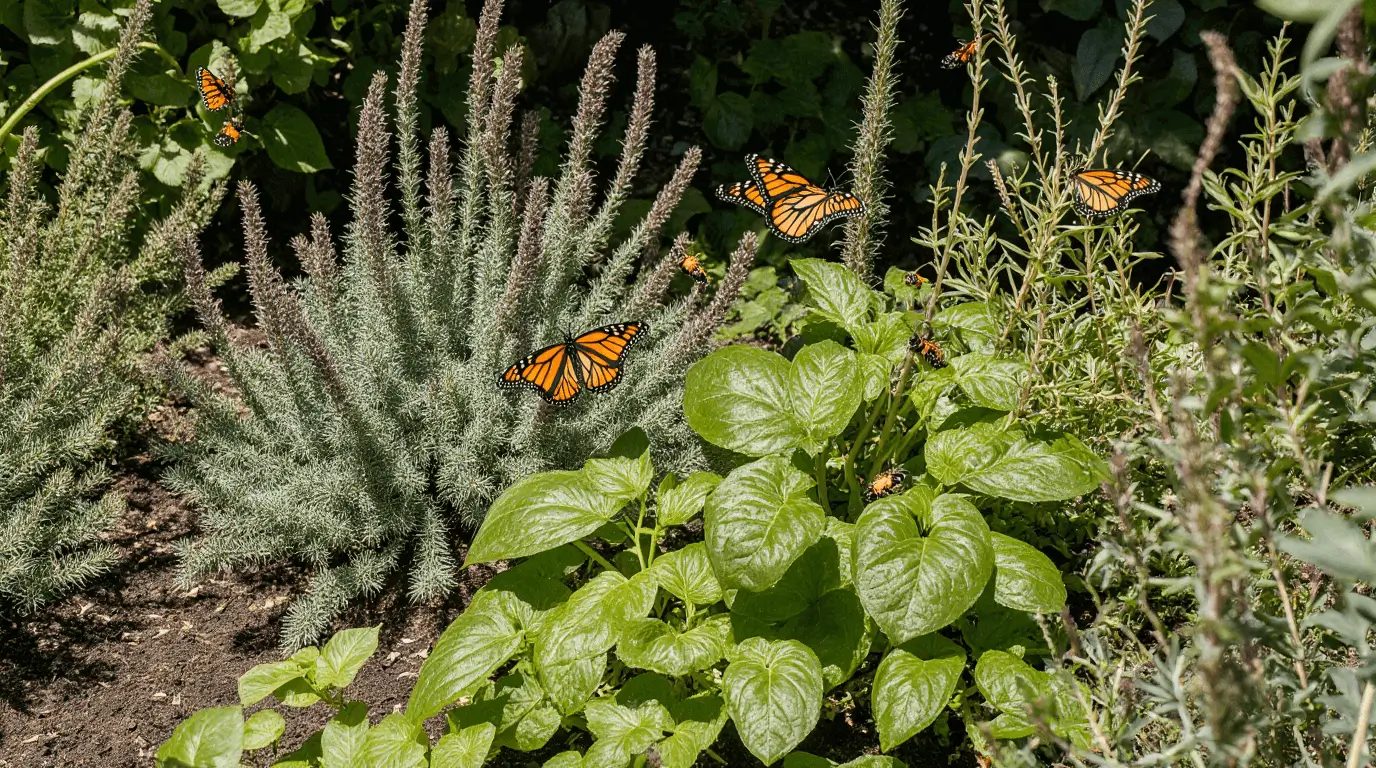
Aside from its rich history and medicinal value, rue is a hidden gem in any pollinator garden. While it may not stand out like sunflowers or lavender, it serves as a vital host plant for swallowtail butterflies, including both black swallowtail and giant swallowtail species. These butterflies lay eggs on rue leaves, which provide nourishment for the developing larvae. The flowers of rue, with their vibrant yellow blooms and fragrant oils, also attract bees and other pollinators. By adding rue to your herb garden, you create a haven for beneficial insects and help sustain a thriving habitat and ecosystem that supports life in more ways than one.
Tips for a Pollinator-Friendly Setup
- Combine rue with other nectar-rich herbs such as basil, oregano, and thyme to attract more pollinator plants to your garden.
- Avoid pesticide use near flowering areas to protect butterflies and bees.
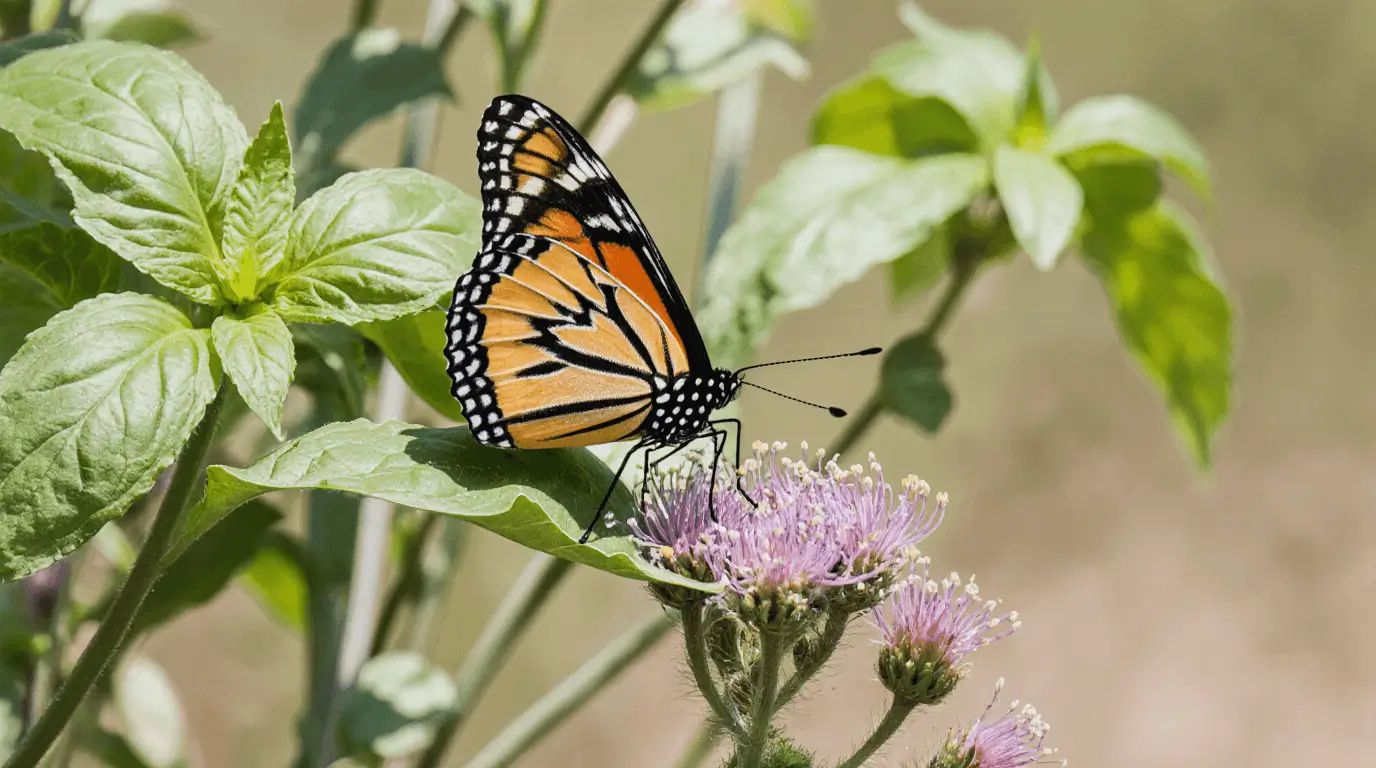
- Add water sources and flat stones so butterflies can rest and stay hydrated.
- Even a single rue plant can host multiple butterflies, enhancing biodiversity in your backyard.
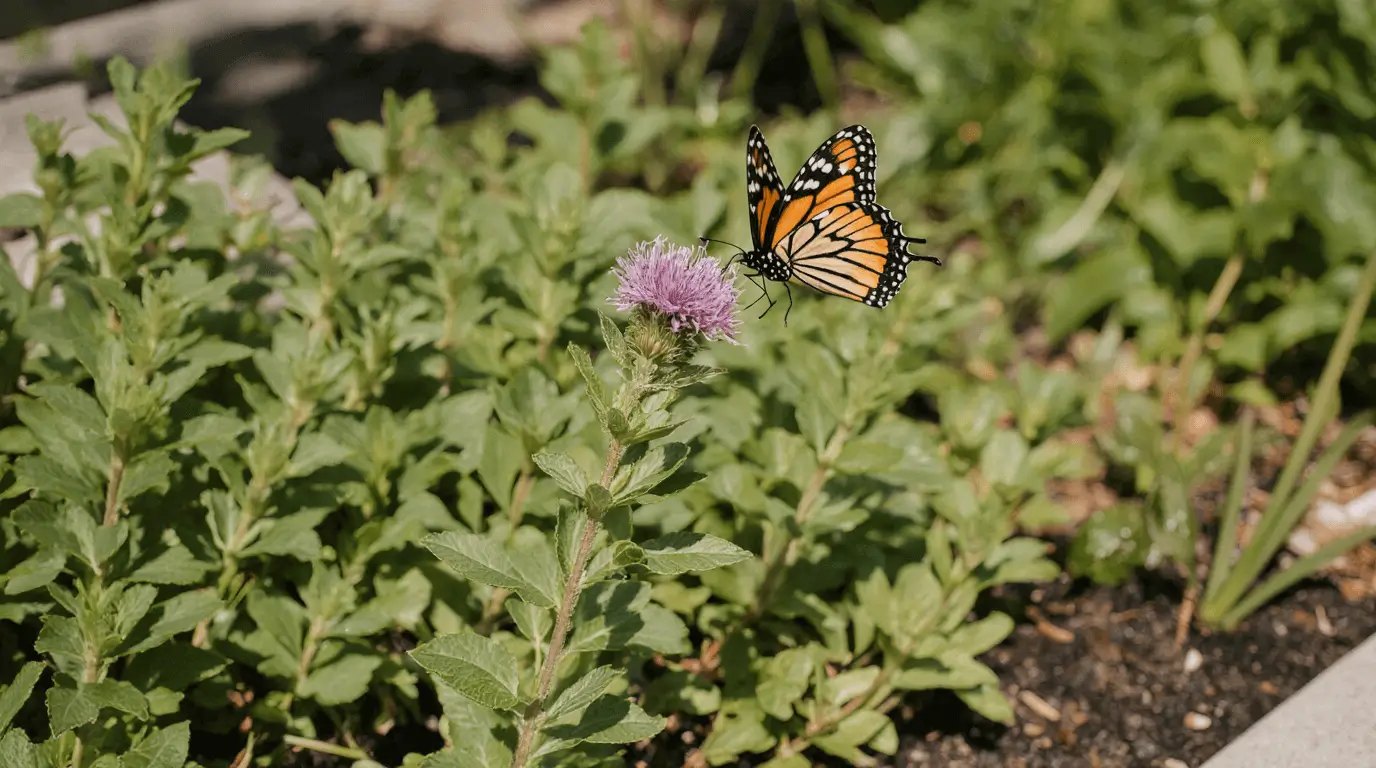
- Choose native species whenever possible and include a hardy herb like rue as a multi-purpose herb for year-round benefits.
In my own experience, blending different herbs with rue creates a balanced garden space that supports pollinators naturally. Small choices like these go a long way toward building a healthy, living ecosystem.
Read Also: Natural Healing & Wellness: Nature’s Remedies Guide

Conclusion
Growing the ruda plant (rue) is more than just an herbal hobby—it’s a connection to centuries of healing traditions, natural beauty, and garden wisdom. Its aromatic foliage, medicinal value, and protective symbolism make it one of the most versatile herbs for any gardener. Whether you grow it for natural remedies, pest control, or spiritual protection, rue rewards your care with resilience and purpose. I’ve learned that with just sunlight, well-drained soil, and a little patience, this ancient herb thrives beautifully, adding both meaning and magic to your garden. Truly, the ruda leaf stands as a timeless reminder that nature’s most powerful gifts often come from the simplest plants.
FAQs
- What are the main benefits of the ruda leaf?
Ruda leaves are known for their anti-inflammatory, antispasmodic, and insect-repellent properties. They help ease muscle tension, aid digestion, and are often used for spiritual cleansing and protection. - Is the ruda plant safe to touch or use?
While ruda is beneficial, its natural oils can irritate the skin, especially under sunlight. Always wear gloves when handling it and consult an herbal expert before internal use. - Can I grow ruda indoors?
Yes, you can! Ruda thrives well in clay pots with good drainage, placed in sunny windows or balconies. Make sure it receives at least 6 hours of direct sunlight daily. - How often should I water the ruda plant?
Ruda is drought-tolerant, so avoid overwatering. Water only when the top 1–2 inches of soil feel dry. Too much moisture can cause root rot. - Does ruda attract or repel insects?
The strong scent of ruda acts as a natural insect repellent, keeping pests like mosquitoes and flies away. Yet, it also attracts pollinators like butterflies, making it perfect for balanced gardens. - What are the different varieties of ruda I can grow?
Popular types include Jackman’s Blue, Variegata, and Black Beauty—each offering unique leaf color and fragrance, perfect for ornamental or medicinal gardens. - Can ruda survive cold weather?
Ruda can tolerate mild cold but should be protected from frost. Use mulch, frost cloth, or bring potted plants indoors during winter for best results.


